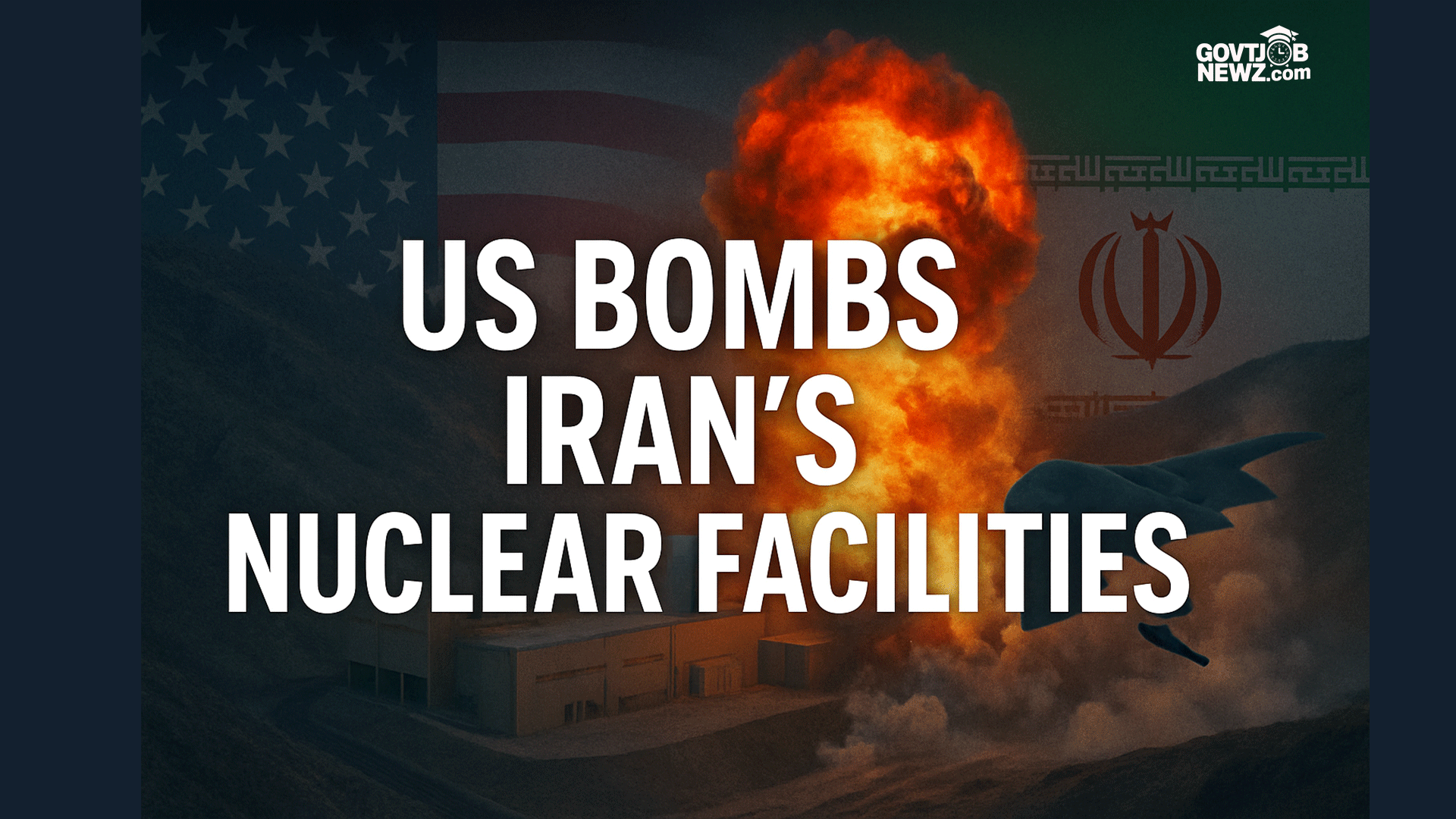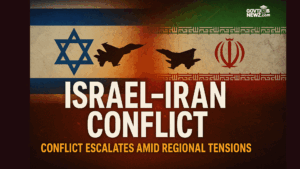US Attack On Iran’s Nuclear Sites Explained
US Attack On Iran’s Nuclear Sites Explained
US Strikes Iran’s Nuclear Sites in Major Escalation: Full Report
Overview of the Attack
In a dramatic escalation of Middle East tensions, US President Donald Trump confirmed that American warplanes have launched precision air strikes on three key Iranian nuclear facilities—Fordo, Natanz, and Isfahan. This marks the most significant US military intervention in Iran since the beginning of the Israel-Iran conflict earlier this month.
“Tonight was the most difficult of them all by far, and perhaps the most lethal,” President Trump declared in a televised national address. “But if peace doesn’t come quickly, we will go to those other targets with precision, speed, and skill.”
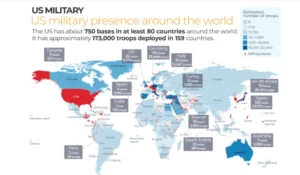
Targeted Sites and Military Assets Used
The targeted facilities are among the most critical components of Iran’s nuclear infrastructure:
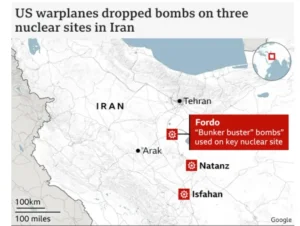
- Fordo: Located deep within a mountainside south of Tehran, Fordo is considered one of the hardest targets to penetrate. The US reportedly used GBU-57 “Massive Ordnance Penetrator” (MOP) bombs designed to reach underground bunkers nearly 90 meters deep.
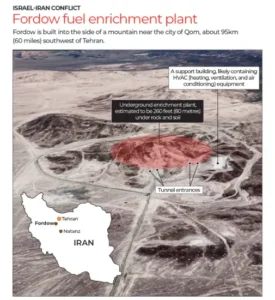
- Natanz: Another vital uranium enrichment center, previously damaged in sabotage attacks and cyber warfare campaigns like Stuxnet.
- Isfahan: Home to uranium conversion facilities essential for producing nuclear fuel.
The MOP bomb, weighing 13,000 kg, is capable of penetrating 18 meters of reinforced concrete or up to 61 meters of soil before detonation, making it the only US weapon capable of targeting deep-enriched Iranian bunkers.
Military Assets Used

How Bunker Buster Works
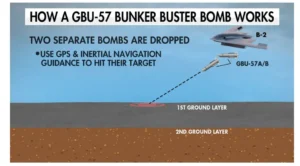
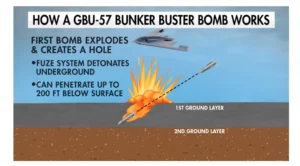
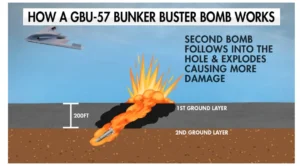
Iran’s Initial Response and Claims
Iranian state television reported that the sites had been evacuated earlier, minimizing casualties and material damage. Hassan Abedini, deputy political director of Iran’s state broadcaster, claimed that “no significant losses” were suffered as nuclear materials had already been moved out of the targeted facilities.
However, President Trump asserted the contrary, stating the “nuclear enrichment facilities have been completely and totally obliterated.” Independent verification of the claims is pending due to restricted access to the affected sites.
Timeline: How Did This Begin?
The roots of the conflict lie in Israel’s pre-emptive strikes on June 13, aimed at crippling Iran’s nuclear program. This triggered a barrage of retaliatory rockets and drones from Iran, marking the beginning of a sustained aerial conflict between the two regional powers.
At the time of the strikes, the US and Iran were reportedly engaged in back-channel nuclear negotiations. Trump had earlier warned Iran of military action if substantial progress wasn’t made within two weeks—though the US acted much sooner.
India’s Position and Strategic Concerns
India, which maintains diplomatic ties with both the US and Iran, faces a complex balancing act. The escalation poses serious challenges for New Delhi on three major fronts—energy security, regional stability, and economic growth.
1. Energy Security at Risk
India imports over 80% of its crude oil needs, and a large chunk of this comes through the Strait of Hormuz, a chokepoint Iran could now target. Any disruption here would lead to a spike in global oil prices, putting pressure on India’s trade deficit, inflation rates, and domestic fuel costs.
2. Strategic Autonomy at Stake
India has traditionally walked a fine line in Middle East diplomacy, avoiding taking sides in regional rivalries. These strikes put India in a difficult spot—supporting US actions could alienate Iran, while opposing them could complicate strategic defense partnerships with the West, especially under the QUAD alliance.
3. Safety of Indian Diaspora
Over 8 million Indians live and work in the Gulf region. Rising tensions and the threat of a full-scale regional war raise security concerns for Indian citizens, particularly in UAE, Bahrain, and Saudi Arabia where US military bases are located.
Global Economic and Diplomatic Fallout
The US-Iran clash is expected to have far-reaching consequences for global peace and economic recovery, especially in the post-COVID, post-Ukraine world order.
- Oil Price Surge: Brent crude futures have already jumped 9% following the news. Energy-importing nations like India, China, and Germany will face rising costs.
- Stock Market Volatility: Global stock markets showed immediate signs of stress, with emerging markets seeing major outflows.
- World Peace at Risk: UN Secretary-General António Guterres has called for immediate de-escalation, warning of a “wider regional war that could spiral beyond control”.
Implications for Regional and Global Security
The US strikes are expected to inflame tensions across the Middle East. Iran has warned of an “all-out regional war” and has threatened to retaliate by targeting US military assets in the region, including the US Navy’s 5th Fleet HQ in Bahrain.
Further, Iran could attempt to disrupt global oil trade by targeting the Strait of Hormuz, a chokepoint through which over 30% of the world’s oil supply flows. Attacks on commercial shipping in the Persian Gulf could send shockwaves through global energy markets.
Could the US Be Headed Toward War?
Under the US Constitution, only Congress can declare war. However, the President—as Commander-in-Chief—has broad authority to launch military actions without prior Congressional approval. Trump’s strikes, similar to his 2017 attack on Syria, were ordered unilaterally.
Congressional leaders have expressed concern, with bipartisan calls to limit the President’s war powers. However, such legislative efforts often face delays and are usually symbolic unless fast-tracked during emergencies.
Global Reactions and Diplomatic Moves
Israel has ramped up nationwide security, suspending public events, education activities, and workplace operations. Meanwhile, the United Nations Security Council has scheduled an emergency meeting to discuss the escalating conflict.
European nations have called for de-escalation, with France, Germany, and the UK urging both sides to return to the negotiation table. China and Russia, while condemning the strikes, emphasized the need for diplomatic solutions and non-interventionist strategies.
What Comes Next?
The situation remains fluid. Analysts warn of further retaliatory strikes by Iran either directly or through proxy forces in Lebanon, Iraq, and Yemen. The potential for a broader regional war is now very real, with key oil-producing nations and US allies possibly being dragged into the conflict.
Conclusion
As the world watches nervously, the recent US strike on Iranian nuclear sites has opened a dangerous new chapter in global geopolitics. For India, the ripple effects could be deeply felt—on the economy, diplomacy, and diaspora security. A careful and proactive approach will be key to safeguarding national interests in this volatile environment.
Quick Facts Recap
- Struck Sites: Fordo, Natanz, Isfahan (all nuclear-linked)
- Bomb Used: GBU-57 Massive Ordnance Penetrator
- Iran’s Claim: Sites were evacuated, minimal damage
- US Claim: “Total obliteration” of nuclear enrichment capacity
- India’s Risk: Oil prices, Gulf expats, diplomatic balancing
- UN Response: Emergency Security Council meet scheduled
US Attack On Iran’s Nuclear Sites Video Explaination
Stay with GovtJobNewZ for live updates on this developing story.

